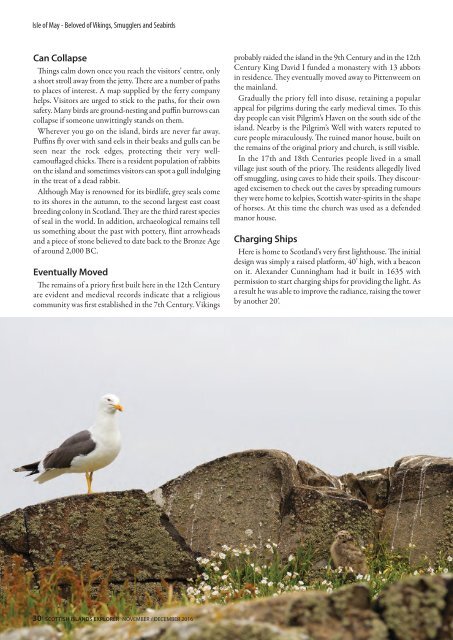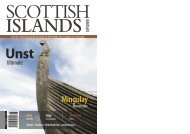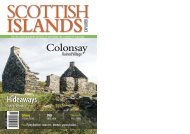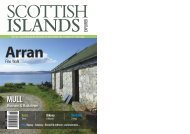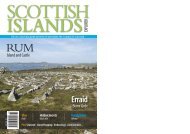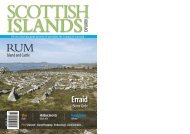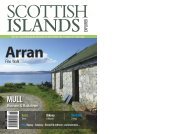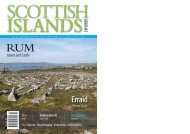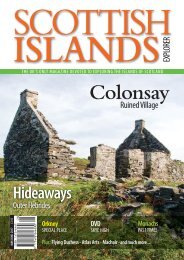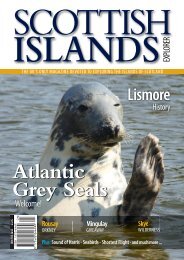You also want an ePaper? Increase the reach of your titles
YUMPU automatically turns print PDFs into web optimized ePapers that Google loves.
Isle of May - Beloved of Vikings, Smugglers and Seabirds<br />
Can Collapse<br />
ings calm down once you reach the visitors’ centre, only<br />
a short stroll away from the jetty. ere are a number of paths<br />
to places of interest. A map supplied by the ferry company<br />
helps. Visitors are urged to stick to the paths, for their own<br />
safety. Many birds are ground-nesting and puffin burrows can<br />
collapse if someone unwittingly stands on them.<br />
Wherever you go on the island, birds are never far away.<br />
Puffins fly over with sand eels in their beaks and gulls can be<br />
seen near the rock edges, protecting their very wellcamouflaged<br />
chicks. ere is a resident population of rabbits<br />
on the island and sometimes visitors can spot a gull indulging<br />
in the treat of a dead rabbit.<br />
Although May is renowned for its birdlife, grey seals come<br />
to its shores in the autumn, to the second largest east coast<br />
breeding colony in Scotland. ey are the third rarest species<br />
of seal in the world. In addition, archaeological remains tell<br />
us something about the past with pottery, flint arrowheads<br />
and a piece of stone believed to date back to the Bronze Age<br />
of around 2,000 BC.<br />
Eventually Moved<br />
e remains of a priory first built here in the 12th Century<br />
are evident and medieval records indicate that a religious<br />
community was first established in the 7th Century. Vikings<br />
probably raided the island in the 9th Century and in the 12th<br />
Century King David I funded a monastery with 13 abbots<br />
in residence. ey eventually moved away to Pittenweem on<br />
the mainland.<br />
Gradually the priory fell into disuse, retaining a popular<br />
appeal for pilgrims during the early medieval times. To this<br />
day people can visit Pilgrim’s Haven on the south side of the<br />
island. Nearby is the Pilgrim’s Well with waters reputed to<br />
cure people miraculously. e ruined manor house, built on<br />
the remains of the original priory and church, is still visible.<br />
In the 17th and 18th Centuries people lived in a small<br />
village just south of the priory. e residents allegedly lived<br />
off smuggling, using caves to hide their spoils. ey discouraged<br />
excisemen to check out the caves by spreading rumours<br />
they were home to kelpies, <strong>Scottish</strong> water-spirits in the shape<br />
of horses. At this time the church was used as a defended<br />
manor house.<br />
Charging Ships<br />
Here is home to Scotland’s very first lighthouse. e initial<br />
design was simply a raised platform, <strong>40</strong>’ high, with a beacon<br />
on it. Alexander Cunningham had it built in 1635 with<br />
permission to start charging ships for providing the light. As<br />
a result he was able to improve the radiance, raising the tower<br />
by another 20’.<br />
30 SCOTTISH ISLANDS EXPLORER NOVEMBER / DECEMBER <strong>2016</strong>


